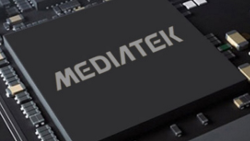Deca-core Helio X30 rises against Snapdragon 835 with 10nm process, PowerVR graphics

Imagination’s PowerVR graphics provide huge performance boost and power savings in MediaTek’s new Helio X30 chipset
New flagship smartphone processor contains advanced PowerVR Series7XT Plus GPU
LONDON, Feb. 27, 2017 (GLOBE NEWSWIRE) -- Imagination Technologies (IMG.L) announces that MediaTek Inc. selected its PowerVR Series7XT Plus GPU to achieve higher performance and lower power graphics in its new flagship MediaTek Helio™ X30 processor. The full-featured 10-core Helio X30 is MediaTek’s most advanced smartphone chipset to-date, with graphics that achieve a 2.4x performance boost and power savings up to 60 percent compared to the previous generations.
The MediaTek Helio X30 SoC, manufactured in TSMC 10nm process, brings a new level of computing performance, power efficiency and multimedia features to MediaTek’s Helio family of processors. Imagination’s PowerVR GT7400 Plus GPU delivers advanced high definition graphics and superior performance for vision and computational photography-based applications. It includes full hardware support for tessellation and ASTC LDR and HDR texture compression standards.
“The combination of MediaTek’s processing technologies and the PowerVR Plus GPU in the MediaTek Helio X30 enables our customers to create smartphones that deliver great user experiences,” said Jeffrey Ju, EVP and Co-COO of MediaTek.
Says Mark Dickinson, EVP of the PowerVR business unit at Imagination, “The MediaTek Helio X30 is another impressive accomplishment from MediaTek and we were delighted to work with them to support development of the chip’s advanced graphics capabilities. In our strategic collaboration, MediaTek has now combined its unique expertise and innovative technologies with our high-end XTP series of GPUs to create compelling and differentiated devices across the mobile segment.”
About PowerVR GPUs
The PowerVR graphics processor (GPU) family leads the market in technological capability, roadmap breadth and ecosystem, setting the benchmark for mobile and embedded GPUs. PowerVR is the leading graphics technology because it is based on a sophisticated and unique architecture. PowerVR’s efficiency through tile-based deferred rendering (TBDR) ensures the lowest possible bandwidth usage and the lowest amount of processing cycles per task, and all of this leads to high performance efficiency and the lowest power consumption per frame, outperforming other solutions. OEMs using chips with PowerVR inside can translate this advantage into products that provide the most amazing visual experiences with the longest possible battery life.
About Imagination
Imagination is a global technology leader whose products touch the lives of billions of people across the globe. The company’s broad range of silicon IP (intellectual property) includes the key processing blocks needed to create the SoCs (Systems on Chips) that power all mobile, consumer and embedded electronics. Its unique multimedia, processor and connectivity technologies enable its customers get to market quickly with complete and highly differentiated SoC platforms. Imagination’s licensees include many of the world’s leading semiconductor manufacturers, network operators and OEMs/ODMs who are creating some of the world’s most iconic products. See: www.imgtec.com.














Things that are NOT allowed:
To help keep our community safe and free from spam, we apply temporary limits to newly created accounts: